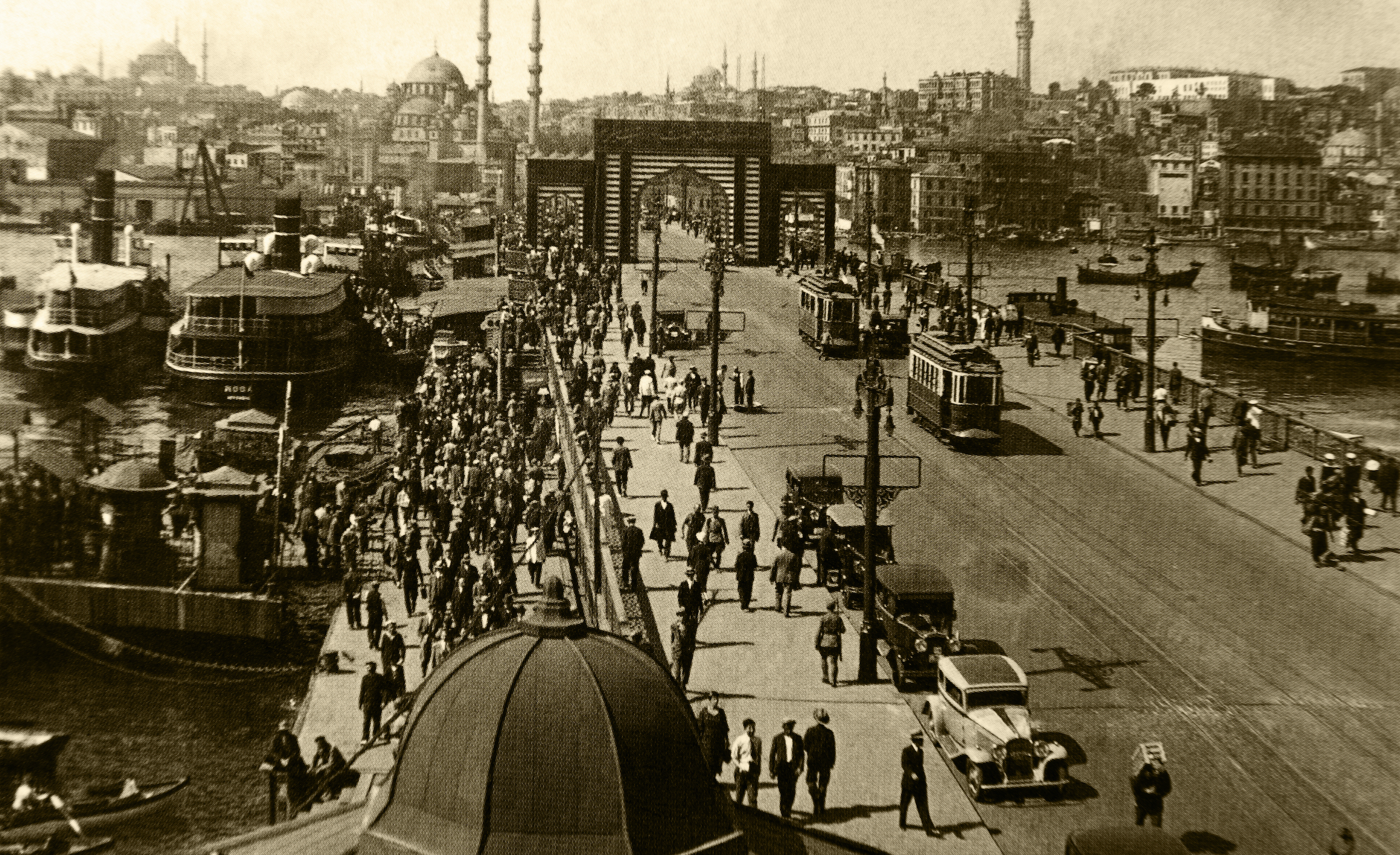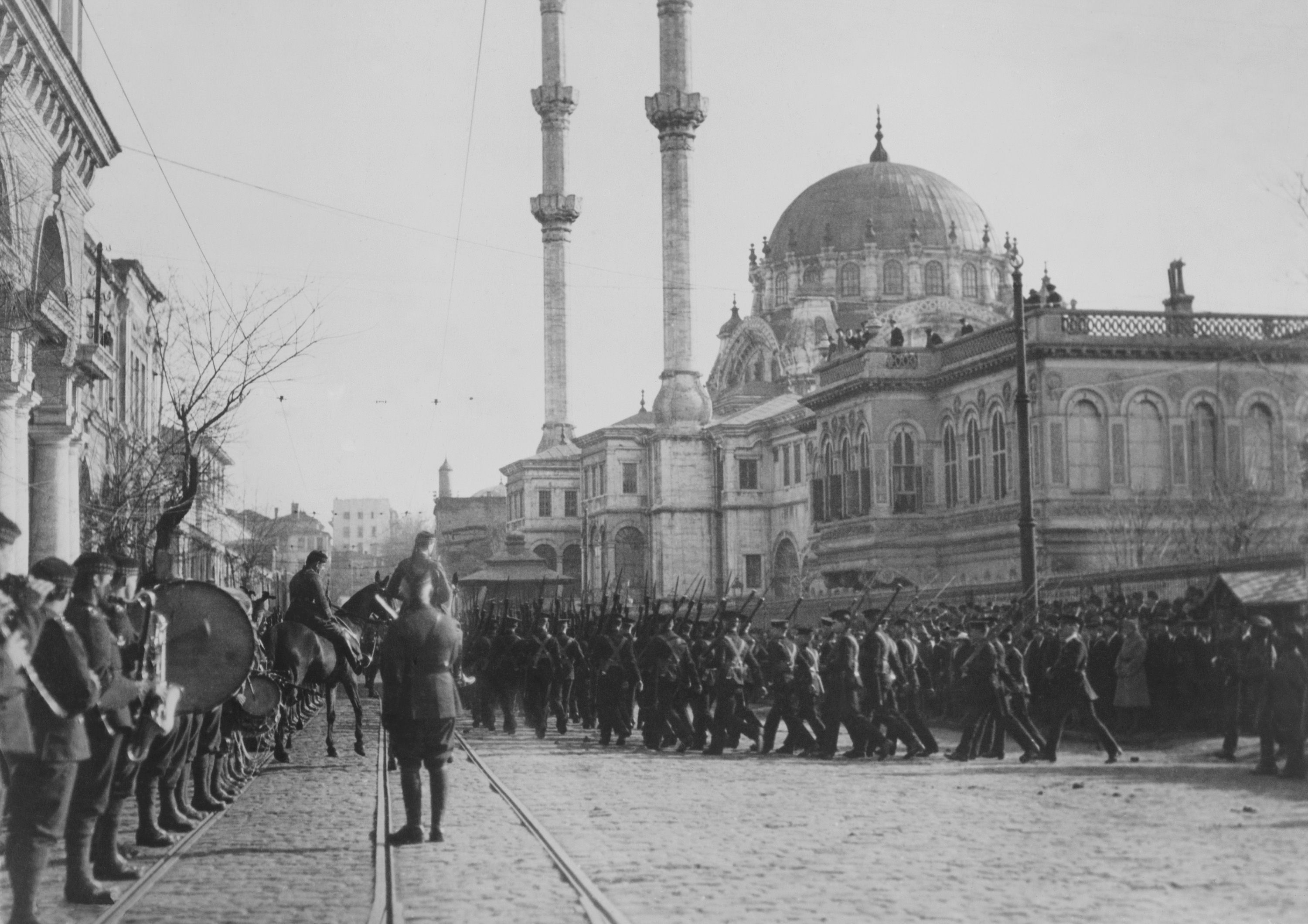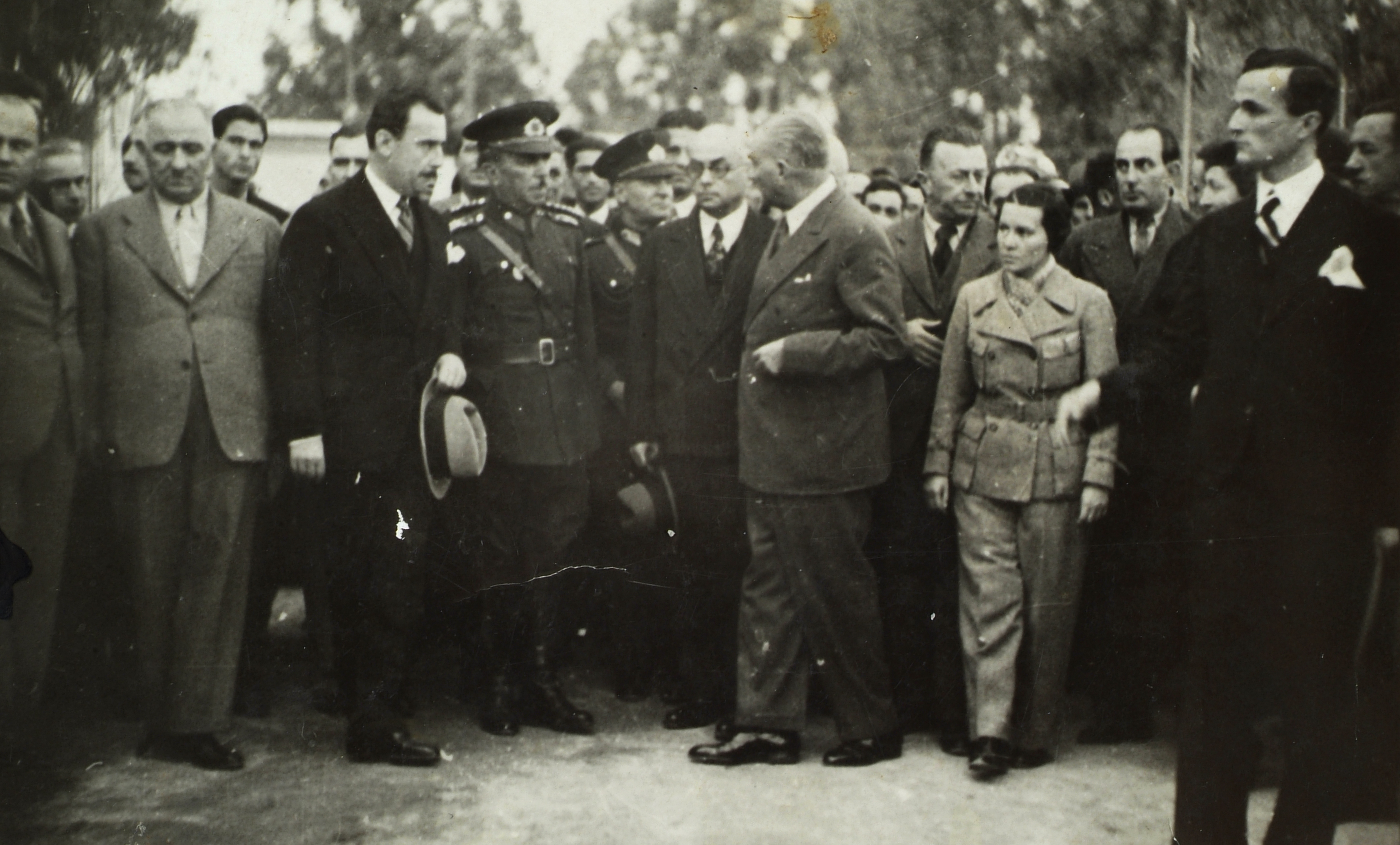The region that we now know as the Middle East, being part of the Ottoman Empire, was an area that essentially had no internal frontiers. It was a territory that one could move across without physical impediment. You didn’t have to go to a border check, and you didn’t need a passport.
That’s not to say there were no constraints on movements. The Ottomans observed a relatively controlled State. Yet, the notion that one could move seamlessly from Egypt through the Fertile Crescent across Turkey to Istanbul was natural for educated elites. These privileged individuals would flock each year to the imperial capital for education and to work as servants to the Sultan.
Underestimating the Ottomans
One of the striking features of the Ottoman First World War effort was, despite losses and weakness demonstrated before 1914, how tenaciously the Ottomans were able to defend their territory. The first major flaw of the Entente Powers was to underestimate the Ottoman Empire. Germany provided the Turks with state-of-the-art military technology, and they proved to be quite an adversary.
By 1915, the Allies would send a fleet through to Istanbul to seize the Ottoman capital and force its government to surrender. Despite the Allies’ confidence in being able to defeat the Ottomans in the Battle of Gallipoli quickly, they realised their first defeat.
Before this, the Allies viewed the Ottoman theatre as the sideshow of the First World War. They had hoped to dismiss the Ottomans quickly and move to the Western Front and defeat Germany. Nevertheless, the deeper Britain was drawn into the Ottoman Empire, the more it developed its territorial ambitions in Ottoman lands.
Post-war settlement
At the end of October 1918, British-led forces can deal the Ottomans the decisive defeat. Their victory forces the Ottomans to withdraw from Arab lands back into Turkish territory. This withdrawal left these newly liberated Arab territories to be decided as part of the post-war settlement.
This progressive encroachment of Allied forces into Ottoman territory creates a new reality that would play out in the aftermath of the First World War. The post-war settlement didn’t see the Middle East as a region of the world in its own right. As such, there was no acute sense to enact new Wilsonian ideas about the right of national self-determination being inherent in all peoples. The post-war settlement would occur without consultation or consent of those it affected.
By this time, Russia was occupied with the Bolshevik Revolution and had given up any of its territorial ambitions. Britain, France, Greece and Italy began to carve up the Ottoman territory while striving to achieve a balance of imperial power. However, this partitioning introduced hard boundaries and new States into a region that had been an uninterrupted area of movement. Through the League of Nations, Britain and France redefined colonial relations in terms of a mandate of maturer States providing tutelage to newly emerging Asian countries on how to create the institutions of self-rule.
This initiative sounded benevolent. For the peoples involved, however, it was not. Instead, it appeared as a bid to introduce an imperial situation among people who wished to exercise their right of self-determination and emerge as independent nation-states in the post-Ottoman world.
With the conclusion of this wartime partition diplomacy, we saw a new reality emerge in which the Middle East would become divided into a series of States with rigid boundaries under British or French rule. This would prove a very enduring legacy of the First World War. Those borders have survived a long time; so too have the conflicts borne of this unjust process of State formation. They have left the Middle East a zone of conflict for over a century now.
Partitioning the region
Before the conflict, the Ottomans are determined to suppress any separatist or political reformation talk in the Arab world. They believe it is better to keep the Ottoman Empire as a Turko-Arab Empire. This ends in 1918, however, when politically engaged Arabs meet in freedom for the first time in major cities – Cairo, Beirut and Damascus – across the Arab world.
They meet under what they perceive to be the threat of a possible colonial takeover. They know that British troops, and soon French troops, are policing their streets. They seek reassurance from the victorious powers that their wishes to form independent governments will be respected.
Initially, Britain and France comply. Regardless, the logic of the post-war partition becomes apparent by April 1920. At this time, the victorious powers meet in Sanremo and agree to create new nation-states very much in line with a balance of power between Britain and France’s Empires. They do this without considering the wishes of self-determination of the Arab peoples.
Competing national identities
The situation leaves several competing national ideas, none of which has time to get a critical mass of support. On the one hand, there are local political ambitions throughout the region; on the other, there are places like Lebanon, which has a distinct vision of a nation-state dominated by the Christians and Druze, the majority population of Mount Lebanon for centuries.
There is also a Syrianist vision based in Damascus which sees modern-day Lebanon, Syria, Palestine, Israel and Jordan becoming one distinct territory. There was even an Arab superstate idea that would have bound the Red Sea provinces of the Hejaz, Greater Syria and the territories of modern Iraq into one Hashemite-dominated Arab kingdom.
The violence imposed on these countries sets in motion both nation-state nationalisms and transnational nationalisms. There were prominent Iraqi, Syrian and Palestinian aspirations for independence within their frontiers, as well as an even more legitimate notion of an Arab-wide national unity. Indeed, pan-Arabism or Arab nationalism would come to dominate Arab political discourse right across the 20th century.
The fate of Turkey
One of the more interesting outcomes of the post-war settlement was the fate of Turkey. I think Britain and France made a major flaw in underestimating their defeated central power adversary. As part of the post-war Versailles peace process, the Entente Powers imposed a very draconian peace treaty on the Ottoman Empire, the Treaty of Sèvres, which was presented to the Ottomans as a fait accompli in August 1920.
The signing of the Treaty of Sèvres radically split the body politic of the Ottoman government. It gave birth to a nationalist movement led by Mustafa Kemal, later Atatürk. Based in Ankara, he had been setting up a kind of nationalist movement tasked with lobbying against the Ottoman governments accepting the draconian treaty. However, the Sultan and those surrounding him feared that if they did not respect the letter of the Treaty, the victorious Entente Powers would then move to implement yet harsher measures. These measures would strip the Ottomans of control over their capital city and of their strategic waterways linking the Black Sea to the Mediterranean.
The leadership in Istanbul believed if officials demonstrated their compliance and good intentions, they could then bargain for a better result in the coming years. In Ankara, Atatürk and his partisans believed that the Ottomans would never win back whatever they signed away in the Treaty of Sèvres.
This split divides the Ottomans between the government and the nationalist movement; the nationalist movement that will essentially go to war against the victorious powers to pursue nation-building on Turkey’s own terms. This drives the French, the Italians, the Armenians and the Kurds either out of the territory or into submission. The movement also faces down a challenge by the British government in 1922, effectively forcing the Entente Powers to negotiate a new treaty creating the new Republic of Turkey.
At this point, the Entente Powers are speaking uniquely to Mustafa Kemal Atatürk, the Ottoman Sultan has been abolished, and the Republic of Turkey has been declared. At the end of a very bloody conflict between Turkey and Greece, the consolidation of territory in Thrace, Anatolia and thereabouts is consolidated into the Turkish Republic. This is officially written into international law in Lausanne in 1923.
In this, Turkey is the only defeated power of the First World War to force the victorious powers to renegotiate the terms of peace favourably. This victory for Mustafa Kemal Atatürk legitimises him as president of the Turkish Republic and allows him a measure of freedom to reshape the Turkish Republic. He creates a highly challenging, contested vision of a secular, modern State that embraces the separation of religion and politics. This system is only effectively challenged in the 21st century by the rise to power of the AKP Party, headed by now-President Recep Tayyip ErdoÄŸan. This tension between secularism and religion in Turkey is itself another legacy of the First World War and the post-war settlement. Indeed, it can still be seen shaping the political culture of Turkey today.


